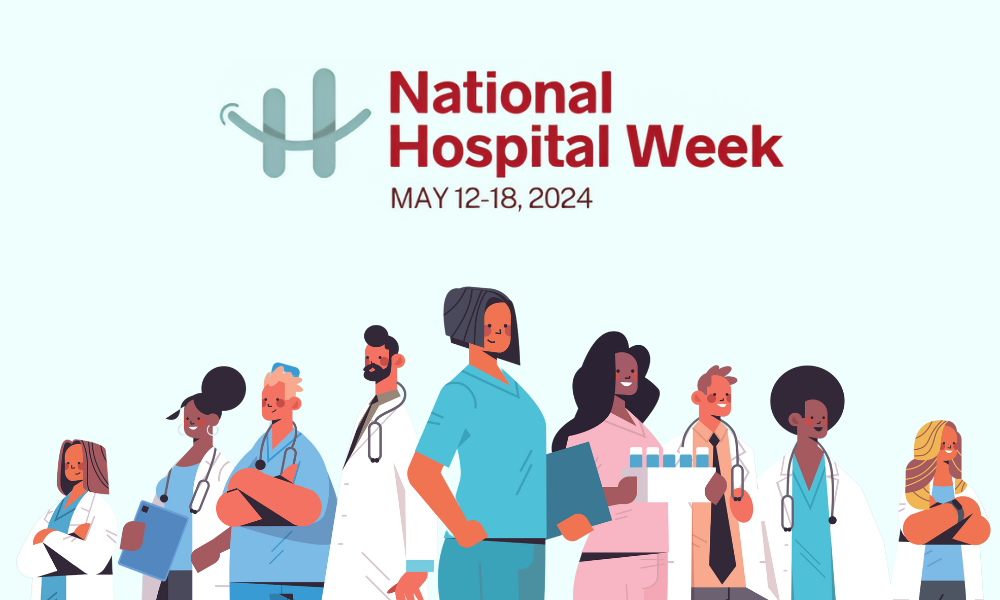Locums CME is a bi-weekly roundup of recent news that matters to locum tenens providers. Stay in the loop on what’s new in the locums industry, and make the most of the locum tenens lifestyle with our fresh finds. Here’s what’s in store for you in Locum CME #12:
- Unlocking the Key to Recruiting & Retaining Rural Healthcare Professionals: Perspectives from a Multi-Region Study
- Floyd Lee Locums: 5 Reasons to Make the Leap to Locum Tenens
- MPLT’s Advice on Navigating The Locum Tenens State Licensure Maze
- Land Your Dream Job: Perfecting Your Physician CV with Jackson + Coker
- Burnout and High Labor Costs Taking a Toll on Physicians
- Clinician-Owned vs. Hospital-Owned Practices: JAMA Study Reveals Burnout & Care Quality Impact
- Ardmore Institute of Health Offers Free CME Course on Prioritizing Provider Well-being
- Optimizing Physician Peer Support Programs for Sustainable Success
- Cultivating a Culture of Clinician Well-Being: Washington Permanente Medical Group’s Journey to Combat Burnout
- Socially Speaking: Social posts of note from CompHealth, Hayes, LT.com, Western & more
- Maximizing Real Estate Assets in Physician Practice Private Equity Deals
- Unpacking the Economics of Physicians: Billing, Collections, and Revenue Generation
- Doctors Struggle with Delays in Patient Care Due to Prior Authorization: AMA Survey Reveals Alarming Findings
- Criticism and Concerns Surround Proposed CMS Payment Update for Hospitals
Unlocking the Key to Recruiting & Retaining Rural Healthcare Professionals: Perspectives from a Multi-Region Study
(From U.S. Department of Agriculture Economic Research Service, 4/4/2023)
The U.S. Department of Agriculture Economic Research Service (ERS) released a report on the role of social capital in recruiting and retaining healthcare professionals in rural areas across nine states: Arkansas, Iowa, Kansas, Louisiana, Minnesota, Mississippi, Oklahoma, Texas, and Wisconsin. ERS Economist John Pender highlighted that healthcare professionals consider various relationships when staying in rural towns, including social and professional relationships with family, friends, colleagues, supervisors, staff, and patients.
The study found that investment in their practice, including relationships with patients, facilities, staff recruitment, and training, is a significant factor for healthcare professionals staying in rural areas. Factors within rural communities’ control, such as friendliness towards newcomers, quality of local schools, and quality of medical facilities, were crucial for healthcare professionals’ decisions. However, lacking urban amenities was often cited as a significant drawback in recruiting healthcare professionals, especially dentists.
Pender cautioned that the study’s conclusions might only apply in the nine states’ small towns, and local understanding is essential for effective strategies. Findings consistent with previous studies highlight the relevance of the community capital framework for the healthcare workforce. The report identifies community factors impacting rural healthcare recruitment and retention, and variations across regions and professions provide insights for rural healthcare planning.
Your Locums Prescription
(From Floyd Lee Locums, 4/10/2023)
Floyd Lee Locums shares physicians may be intrigued by transitioning to locum tenens to gain control over their schedule, earn higher pay, and become their own boss. However, some physicians may have reservations about taking the leap into locums.
Here are five reasons that may provide the motivation needed to get started:
1. Taking The First Step to Kickstart Your Locum Tenens Career
Procrastination can be a common obstacle when changing one’s career. By realizing that “someday” can quickly turn into “never,” physicians may be encouraged to take action and start transitioning to locums today. Keeping the benefits of locums in mind can help overcome hesitation and drive physicians to take the first steps.
2. Setting Yourself Apart in the Locum Tenens Market
Competition for desirable locums assignments can be intense. Being proactive and already being in the locums game can increase the chances of winning lucrative assignments over others who may be slower to start. Physicians can position themselves for more favorable opportunities by getting ahead of the competition.
3. Timing is Key for Seamless Locum Tenens Assignments
Obtaining a locums assignment and completing the necessary licensing and credentialing process can be time-consuming, typically taking around three months or more. Starting the process sooner rather than later can help physicians avoid unnecessary delays and begin working as a locum tenens physician earlier. Planning and allocating time for the necessary steps can make the transition smoother.
4. Finding Purpose in Locums Pursuits
Making plans to pursue something that has been a long-held desire can bring a sense of purpose and accomplishment. Additionally, receiving calls from locums recruiters and realizing that one’s skills as a physician are in high demand can boost self-esteem and motivation to pursue locums opportunities. Taking steps toward fulfilling a long-held desire can be personally fulfilling and rewarding.
5. Embracing the Possibilities of Locum Tenens
While there may be anecdotes about the complexity and challenges of the locums process, it’s important to remember that it’s manageable with the right resources and support. Many locum tenens agencies assist with licensing, credentialing, and other administrative tasks, making the process more streamlined and less daunting. Physicians can seek support from locums agencies or colleagues with experience with locums to help navigate the process.
(From MPLT Healthcare, 4/10/2023)
MPLT Healthcare recently offered guidance to locum tenens providers on navigating the licensure process in different states. The process can be complex and vary from state to state, often causing confusion and stress for providers new to the locum tenens field.
Fortunately, many helpful resources and professional staffing firms are available to assist with all aspects of state medical licensing procedures, making the process more manageable.
Participating in The Interstate Medical Licensure Compact
One crucial step to consider is joining The Interstate Medical Licensure Compact (IMLC). As a locum tenens provider, familiarity with the IMLC and entering the Compact can expedite the licensure process for physicians working in various states. By becoming a member of the Compact, you can receive separate licenses by completing one application.
Renew Existing Licenses
Another essential aspect to remember is renewing your existing licenses. While focusing on obtaining new state licenses, you may forget to renew your existing ones. Keeping track of your multi-state licenses and giving yourself enough time to renew each one appropriately is crucial. Each state has a different renewal timeline, ranging from a few weeks to several months. By familiarizing yourself with each state’s licensure renewal guidelines, you can ensure you are prepared and avoid delays.
Partnering with a Locum Tenens Staffing Agency
Working with a locum tenens staffing firm can also be beneficial. Rather than attempting to navigate the state licensure process independently, consider working with a reputable locum tenens staffing firm. Many locum tenens staffing firms may even cover the cost of your licenses.
(From Jackson + Coker Locum Tenens, 4/10/2023)
Jackson + Coker published a comprehensive guide for perfecting your physician CV. The guide has a checklist for different sections, such as contact information, objective and personal statement, work history (noting locums work), education and training, board certifications, licensure, and relevant organizations (e.g., DEA). Additionally, showcase your accomplishments with awards, publications, speaking engagements, or scholarships.
When preparing for job fairs, research organizations of interest, dress professionally and impress potential employers with your demeanor. Arrive early, map out companies to visit, and elevate your introduction by summarizing your attributes, motivations, and career goals. Anticipate potential questions and be prepared with answers. Take advantage of workshops to learn more. Stay connected with recruiters and other participants using LinkedIn, email, or business cards.
Create your job wish list by setting short-term and long-term goals, considering previous experiences, weighing salary expectations, and researching organizations that align with your work environment, culture, and values.
When working with a recruiter, ask them about their experience with your specialty, the leadership style of the hiring manager, the progress of the candidate search, and why other prospects were not selected. Additionally, assess the alignment of the organization’s culture and values with your own.
Physician Wellness Retreat
(From Medical Economics, 4/5/2023)
Physician burnout worsened due to the ongoing COVID-19 pandemic, as revealed in a Medical Economics news post about a J.P. Morgan report on physician payment trends. The report indicates that 47% of physicians experienced burnout, while 74% of healthcare executives felt burned out in the past six months.
Alongside the mental strain, healthcare organizations are grappling with financial challenges, including negative margins and reliance on external funding to stay operational. The report highlights that 36% of providers operated at a loss due to COVID-19 surges, 41% relied on external funding to remain open, and 53% of hospitals are projected to have negative margins through 2022.
A significant financial concern for providers is the rising cost of labor, which has increased significantly and is expected to continue rising in the coming years. Healthcare organizations need help attracting, training, and retaining staff for critical clinical and administrative positions. Organizations are using monetary incentives to motivate staff to address staffing gaps, and some are over-hiring to combat high turnover rates, as per the report.
These trends further contribute to the financial burden faced by providers. The report highlights that labor expenses per patient have increased by over one-third from pre-pandemic levels, with 20% of providers hiring more staff than needed to address high turnover rates.
Additionally, 15% of providers have increased overtime rates to incentivize staff to work uncovered shifts, and 31% have exceeded their budgets or typical spending on training and hiring new staff. Labor expenses are projected to increase by $86 billion, while non-labor expenses will increase by $49 billion, underscoring providers’ significant financial challenges.
(From RevCycleIntelligence, 4/10/2023)
A recent study published in JAMA Health Forum, covered in a news post by RevCycleIntelligence, found that workplace cultural and structural factors in clinician-owned practices may result in lower staff burnout and improved quality of care. The study analyzed over 700 small- and medium-sized primary care practices participating in the EvidenceNOW: Advancing Heart Health initiative.
Of these practices, 18.3 percent were considered quality and well-being positive deviants (PDs). Staff burnout remained stable or improved. There also was an improvement in quality of care measures at the practice level, such as aspirin prescribing, blood pressure control, and smoking cessation counseling.
Clinician-owned practices were more likely to be considered quality and well-being positive deviants than hospitals, health systems, and health maintenance organizations (HMOs). In contrast, previous research has shown that hospital-owned practices have lower clinician engagement and higher per-patient spending. According to a 2021 study by the American Medical Association (AMA), nearly half of the physician practices in the US are owned by hospitals and health systems, and less than half of physicians work in clinician-owned practices.
Rapid consolidation in healthcare may impact the quality of care and staff burnout levels, and further studies are needed to assess cultural factors that contribute to quality improvements and levels of staff burnout. Brigham and Women’s Hospital researchers have highlighted the need for additional studies to evaluate more detailed cultural factors that may play a role in quality improvements and staff well-being.
The study’s findings suggest that clinician-owned practices have better outcomes regarding the quality of care and staff burnout than hospital-owned practices. These findings underscore the need for further research to understand better the impact of workplace cultural and structural factors on clinician well-being and patient care.
(From Ardmore Institute of Health)
Physicians, nurses, therapists, and applied health professionals are invited to participate in an evidence-based CME course on clinician burnout. The self-paced online course, open until February 17, 2024, provides practical tools and strategies to recognize signs of burnout, manage work-related tasks, cope with stress, increase physical activity, and improve nutrition. Studies show that making healthy choices can positively impact patient outcomes.
This course is provided by Spaulding Rehabilitation Hospital, Massachusetts General Hospital – Department of Surgery, the Ardmore Institute of Health, and Mass General Brigham. It is designed to improve well-being and resilience in the clinical practice setting.
Don’t let burnout affect you or your patients. Enroll to take control of your well-being.
(From American Medical Association, 4/4/2023)
Physician burnout is prevalent in the US healthcare system, with 44% of physicians experiencing signs of burnout weekly. Resilience strategies like yoga and meditation may not be effective as physicians already have high resilience. In 2017, Northwestern Medicine created the Scholars of Wellness (SOW) program to tackle physician burnout, aiming to develop physician champions into well-being experts who can lead wellness programs.
Dr. Angela Chaudhari implemented a peer support program for the OB-GYN department. After identifying the need, volunteer peer supporters trained in techniques such as nonjudgmental listening. Confidential referral emails were created. For the first six months, 26 physicians were referred to the program, and positive outcomes were reported.
Encouraged by the pilot’s success, Dr. Chaudhari expanded the program across the hospital, creating the P2P Network. Challenges included raising awareness, addressing confidentiality concerns, and streamlining the referral process. Risk managers supported the referral process.
The Scholars of Wellness peer support program has shown promise in addressing physician burnout by providing confidential support for distress and adverse events. By addressing organizational factors and promoting peer support, this program can potentially reduce physician burnout in the long run.
(From American Medical Association, 4/11/2023)
In April 2020, Mary Wierusz, MD, took on the role of medical director of clinical wellness at Washington Permanente Medical Group. Dr. Wierusz faced the challenges of the emergent COVID-19 pandemic while addressing the physician burnout crisis.
Washington Permanente, an AMA Health System Program member, started using the validated AMA Mini Z burnout survey in 2021 during the pandemic, after years of measuring engagement. Dr. Wierusz emphasized the importance of local action and systemic changes to tackle burnout and moral injury.
Research co-written by AMA experts showed that from 2021 to 2022, the burnout rate at Washington Permanente decreased by nearly 6 percentage points, while the national physician burnout rate increased by 2 percentage points from 2020 to 2021. Dr. Wierusz acknowledged the progress made but also recognized that more work needs to be done, expressing optimism for improving burnout rates and Mini-Z subscale scores.
Dr. Wierusz attributed the improvement in burnout to Washington Permanente’s strategy focusing on clinician well-being through the Stanford Professional Fulfillment model, addressing organizational culture, personal resilience, and practice efficiency. The organization follows the recommendations of the National Academy of Medicine for healthcare worker well-being, including strengthening leadership behaviors and organizational commitment.
Under Dr. Wierusz’s leadership as medical director of clinical wellness at Washington Permanente Medical Group, burnout rates significantly decreased by almost 6 percentage points from 2021 to 2022, despite the national increase in physician burnout rates during the COVID-19 pandemic. This positive outcome is attributed to the implementation of the AMA Mini Z burnout survey and the Stanford Professional Fulfillment model, as well as Dr. Wierusz’s emphasis on local action and systemic changes that align with the recommendations of the National Academy of Medicine.
Socially Speaking
From LinkedIn
From Twitter
Doctor’s Notes
(From Medical Economics, 4/7/2023)
Medical Economics outlines that physician-owned real estate can significantly impact private equity deals. The trend of physician practices engaging in private equity deals has been on the rise, with a record number of deals taking place in 2021. Many physicians own valuable real estate assets for their medical practices, and the decision to sell can change the entire trajectory of the practice, raising critical questions that require careful consideration.
The Impact of Private Equity Sales on Property Holdings
One key question is how physicians will extract capital from real estate. Associate physicians may not be willing or able to buy into real estate, which can impact senior partners’ exit strategy. Therefore, it is crucial to focus on how a private equity sale affects the physicians’ property holdings and prepare accordingly.
Physician groups exploring a private equity transaction should consider how real estate fits the equation. Private equity-backed practices typically pay rent to physician-owned real estate entities, and a new lease is generally struck as part of the deal. Proper lease structuring is crucial to preserve and maximize the real estate value, including determining fair market rent, establishing a long-term lease, defining NNN (triple net) terms, and considering a corporate guarantee.
The Anatomy of Critical Lease Structuring to Maximize Property Value
In addition to financial considerations, it is essential to consider the legal and tax implications when structuring a lease during a private equity transaction.
Compliance with relevant regulations and minimizing tax liabilities are substantial. Working with experienced legal and tax advisors ensures the lease is structured to maximize value while complying with regulations. Properly structuring the lease as part of a private equity transaction is crucial, as renegotiating after the deal is closed can be challenging.
Physician-owned real estate plays a significant role in the value of private equity deals for physician practices. Careful consideration and preparation are necessary to ensure that real estate assets are maximized and preserved during a private equity transaction. Thoughtful lease structuring and legal and tax considerations can help protect the value of the physician-owned real estate and optimize financial outcomes for physician practices engaging in private equity transactions.
(From Medical Economics, 4/3/2023)
Medical Economics highlights how physicians contribute to the healthcare economy through their work and the tests and procedures they order for patients. According to an AMN Healthcare report, physicians bill an average of $3.8 million annually to commercial healthcare insurance companies. The report analyzed claims from 18 specialties, including nurse practitioners (NPs) and certified registered nurse anesthetists (CRNAs).
Specialists generated higher average billing amounts than primary care physicians, with an average of over $4.65 million sent to commercial payers, compared to an average of $1.77 million for primary care physicians. Despite the difference in billing amounts, primary care physicians may generate considerable downstream revenue through hospital admissions, tests, and treatments they order, resulting in an average of more than $2.11 million in net annual revenue for affiliated hospitals.
The report also emphasized the role of advanced practice professionals (APPs) such as CRNAs and NPs in revenue generation. CRNAs submitted an average of $1.75 million in claims to commercial payers, while NPs billed an average of $777,393. Although their billing amounts are lower, APPs are paid less than physicians. However, their role as revenue generators has expanded due to state policies that have expanded their scope of practice and the physician shortage.
Physicians play a critical role in the healthcare economy by generating services and revenue. Specialists tend to have higher average billing amounts than primary care physicians, but primary care physicians may generate downstream revenue through hospital admissions and other services. Despite lower billing amounts and pay than physicians, APPs contribute significantly to revenue generation. The report underscores the complex dynamics of billing and collections in the healthcare industry and highlights the economic importance of physicians and APPs in delivering healthcare services.
(From Healthcare Finance News, 3/28/2023)
Physicians are facing increased delays in providing patient care due to prior authorization requirements, with 94% experiencing such delays, according to a recent AMA survey that referenced Healthcare Finance News. This survey underscores the urgent need for reform and regulation.
AMA data reveals that physicians spend nearly two business days per week on prior authorization requests, with 35% needing additional staff. Additionally, 80% of physicians reported treatment abandonment, and 33% witnessed severe adverse events for patients, with 9% reporting permanent harm. Despite the complexity of prior authorization, 86% of physicians believe it results in higher utilization of healthcare resources.
Certain medical specialties, such as ophthalmologists and rheumatologists, face challenges with broad prior authorization policies from insurance companies. Ophthalmologists often encounter prior authorization requirements for cataract surgeries, while insurers commonly target rheumatology patients who rely on expensive biologic medications for treatment, as per the AMA.
In December 2022, the Centers for Medicare and Medicaid Services (CMS) proposed a rule to expedite prior authorization approval. CMS aims to mandate electronic prior authorization and decisions within 72 hours for expedited requests and seven days for non-urgent requests for specific payers, including Medicare Advantage organizations. Congress is considering bipartisan legislation to address prior authorization in Medicare Advantage, and some states have passed gold card exemptions for certain physicians. Surgeon General Vice Admiral Vivek Murthy has recognized prior authorization as a contributor to clinician burnout. The Office of the Inspector General has recommended protocols for Medicare Advantage Organizations in denying prior authorization requests.
(From Healthcare Dive, 4/11/2023)
Healthcare Dive shared that The Centers for Medicare & Medicaid Services (CMS) proposed a 2.8% pay increase for hospitals in 2024, totaling $3.3 billion in additional funding. However, hospitals are dissatisfied and seek more support. The annual Medicare payment rule for inpatient and long-term care facilities, released by the Biden administration, also includes a 2.9% increase for long-term care hospitals.
Hospitals faced financial challenges in 2022 due to the COVID-19 pandemic. Kaufman Hall’s report shows that half of them had negative operating margins due to rising costs. Some large hospital groups are dissatisfied with the proposed CMS payment update.
The American Hospital Association and Federation of American Hospitals criticize the proposed payment update as inadequate. America’s Essential Hospitals expresses concern about proposals to decrease payments to safety-net hospitals. CMS estimates Medicare payments will fall by $115 million in 2024. Regulators continue to seek public comment on additional support for safety-net hospitals.
Despite hospitals’ claims of financial strain, research suggests federal assistance during the pandemic has offset losses, and profit margins have remained stable. According to The Wall Street Journal, publicly traded hospitals’ stocks have generated positive returns. Some experts argue that challenges reported by nonprofit hospitals are driven by investment losses rather than higher costs.
The CMS rule proposes changes to health equity metrics, including 15 new categories. Regulators prioritize standardized health equity data. CMS also proposes higher reimbursement for hospitals caring for homeless patients. The rule clarifies that no additional payments for new COVID-19 treatments will be made if the public health emergency ends in May as scheduled.








